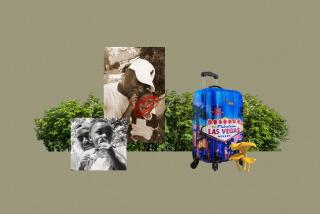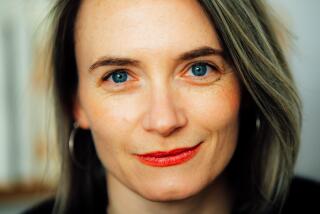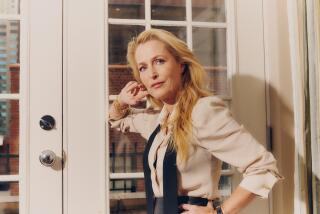Laurie Anderson on turning loss into lemonade, and why that matters
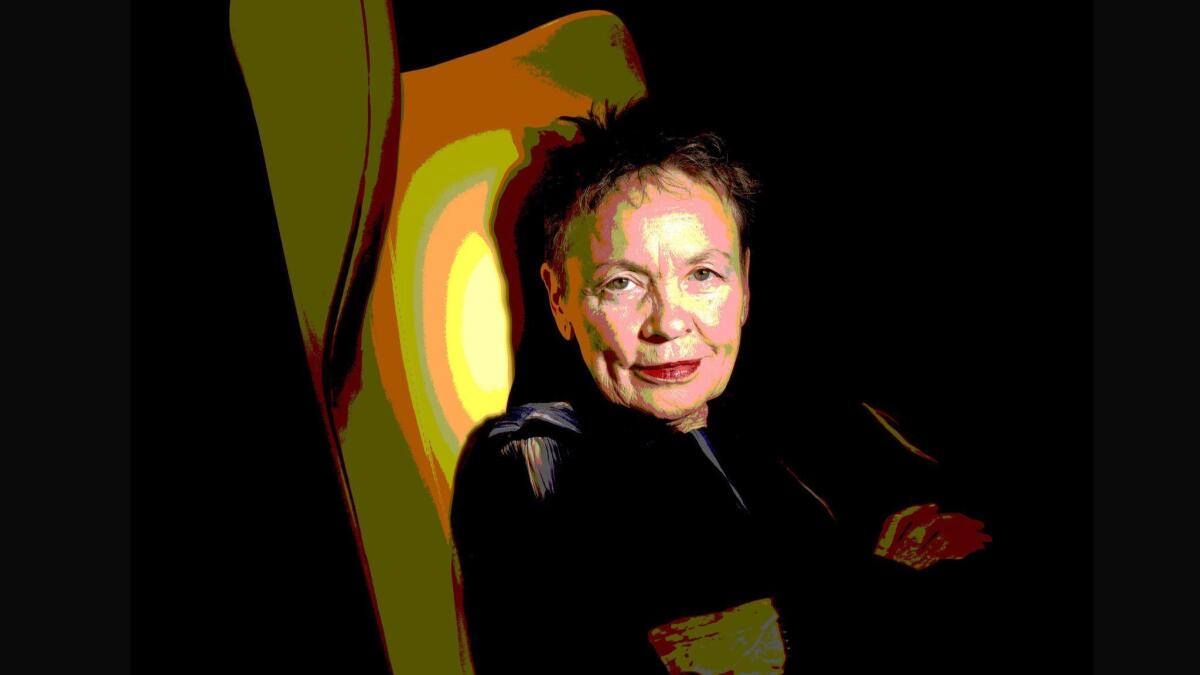
Fake news. The impermanence of objects. The stories we tell ourselves. The psychic toll of social media. The dangerous art that can be made with a pencil.
These were all subjects of concern to artist and musician Laurie Anderson when she wrote her book “All the Things I Lost in the Flood” and conceived her latest show, which comes to the Wallis Annenberg Center for the Performing Arts in Beverly Hills on Friday.
The question is not “Who is Laurie Anderson?” but rather “Who isn’t she?” Her new work ping-pongs between themes and ideas as swiftly as the artist herself dons the various hats that constitute her multifaceted identity: high priestess of poetry, demon on the violin, sculptor, filmmaker, multimedia creator, digital entrepreneur, inventor, pop rocker, avant-garde historian, widow of the late and great Lou Reed.
Anderson has experienced a great deal of loss lately — the first alluded to in the title of her book and show, when decades’ worth of precious art and artifacts were destroyed in the rising waters of Hurricane Sandy, and then a year later, in 2013, the loss of Reed to liver disease.
After the hurricane she compiled a thick binder with lists of all the things she had lost in the flood and, she writes, “I realized that since they were no longer objects, they had an entirely different meaning, and that having these long lists was just as good as having the real things. Maybe even better.”
We are in a crisis in terms of, not just what’s a real story, but what is real.
— Laurie Anderson
Reinvention, not just of oneself but of one’s sense of what loss is, looms large in Anderson’s mind. But at its core, Anderson’s new work is about language, and the influence it has on art, hers in particular.
“These are essays about stories, using my own work at different points along the way to talk about it,” she said recently over the phone from her studio on Canal Street in New York City. “It was really inspired by the fallibility of stories, and the fraying of stories, during the election.”
Today, she says, “We are in a crisis in terms of, not just what’s a real story, but what is real.”
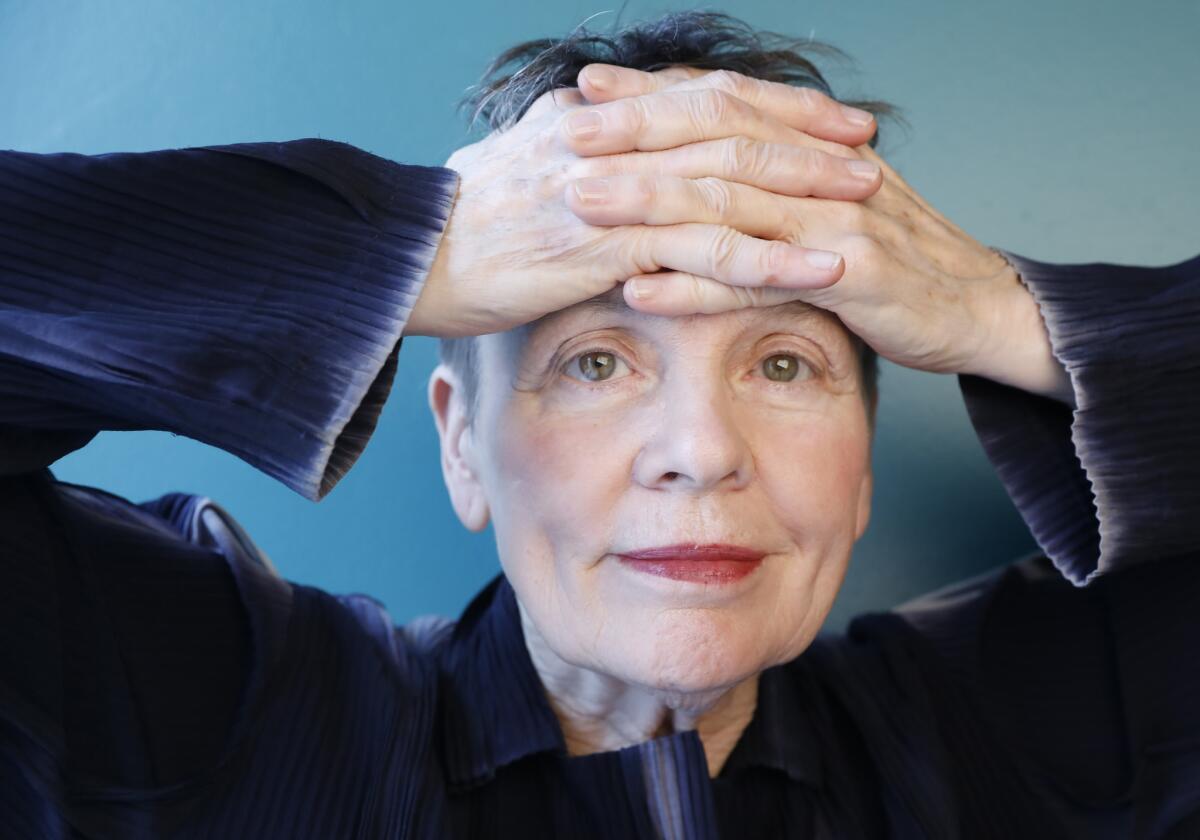
Anderson is an optimist, so that crisis inspired a spirit of inquiry rather than one of doom. Since the beginning of her career in the late 1960s, Anderson has attempted to tell what she calls “the national story.” Continuing along that trajectory, Anderson began examining stories as the engines of identity. In each chapter of the new book, released in February, she looks at different strategies for “putting language into visual art; that is, into instruments, statues, boxes, installations, films and performances.”
In a chapter titled “Talking Statues,” Anderson discusses the ways she has tried to tell stories within the confines of traditional museums. How to make work that speaks in that kind of setting? For a 1976 installation titled “At the Shrink’s,” she projected a Super 8 film loop onto a statue, with a speaker behind it.
Another chapter, “Time to Go,” examines the ways in which her art has been inspired by the concept of time, as well as dreams, calendars and diaries.
“On my sixty-third birthday I suddenly realized that I had been asleep for twenty-one years — or one third of my life,” she writes. “And that meant that my dream self was … an adult who could — if she chose — drink, drive, carry a gun and vote in any state. This was somehow very troubling since I usually feel I am running out of time and haven’t accomplished enough.”
Time, as a theme, is a constant in Anderson’s work and conversation. She sees modern life accelerating because of technology. And yet the more we can do with the click of a button, the less time we actually have, she says. It’s a catch-22, especially for an artist and storyteller who has long embraced technology.
One of her first inventions, in 1977, was the tape-bow: a violin that uses recorded magnetic tape in place of a horsehair bow, with a magnetic tape head in the instrument’s bridge. She eventually discarded the magnetic tape for digital audio samples.
“It’s not like the old days,” she says of time. “It’s really quite sped up. … I don’t have as much time as I used to have. I used to just goof around. Now that I can do 20 things at once, I do it.”
Audiences can expect to see Anderson doing 20 things at once during her performance at the Wallis, as she presents a one-woman show that brings the new book to life through the stories (visual, verbal, musical) that have molded her art.
“She’s one of those people you should see before you die,” says Wallis Artistic Director Paul Crewes. “She’s bridged so many generations of the arts scene, and whatever generation she was working with, she always seemed to be at the forefront of some new approach.”
Anderson is currently examining the transience of things, the transience of concepts, and how those concepts could be recontextualized into something sunnier than they might seem at first.
“I’m trying at the very bottom of this to describe what loss is — what it means to have things and to lose them. Do you try to find a substitute for the thing you lost, or do you pretend you don’t care about it?” she says. “Many people perceive they are losing things now: their freedom or livelihood or future.”
This perceived loss, and the stories of loss that we tell through social media and the news, have resulted in a polarization that Anderson believes doesn’t really exist. She thinks we humans are closer together than our personalized echo chambers of ideas would have us believe.
She knows many people who threw themselves completely into their work after the 2016 election, but when she started looking at what that work was, she saw more unifying themes than divisive ones. Most people, it seems, care about one another and the state of the world we live in. That’s just hard to get across in 280 characters, she says.
“People have the burden of coming up with a coherent personality, and we are not that,” she says of our social-media-driven identities. “We are all products. It’s distressing. It takes a huge toll on people to be seen that way, and to keep up the branding part of their life.”
But we are much more than the digital sum of our parts, she says. We are not “Facebook-type people.”
Anderson is an optimist. And that is the story she is telling.
♦ ♦ ♦ ♦ ♦ ♦ ♦ ♦ ♦ ♦
Laurie Anderson: ‘All the Things I Lost in the Flood’
Where: Wallis Annenberg Center for the Performing Arts, 9390 N. Santa Monica Blvd., Beverly Hills
When: 7:30 p.m. Friday
Tickets: Sold out. To get on the wait list, call (310) 746-4000 or email [email protected]
Information: (310) 746-4000, www.thewallis.org
ALSO:
The Best Little Whorehouse in Texas, and the farmhouse across the street
The projects to receive this year’s Mike Kelley Foundation grants
At the Other Minds Festival, the extravagance of gabble
More to Read
The biggest entertainment stories
Get our big stories about Hollywood, film, television, music, arts, culture and more right in your inbox as soon as they publish.
You may occasionally receive promotional content from the Los Angeles Times.
